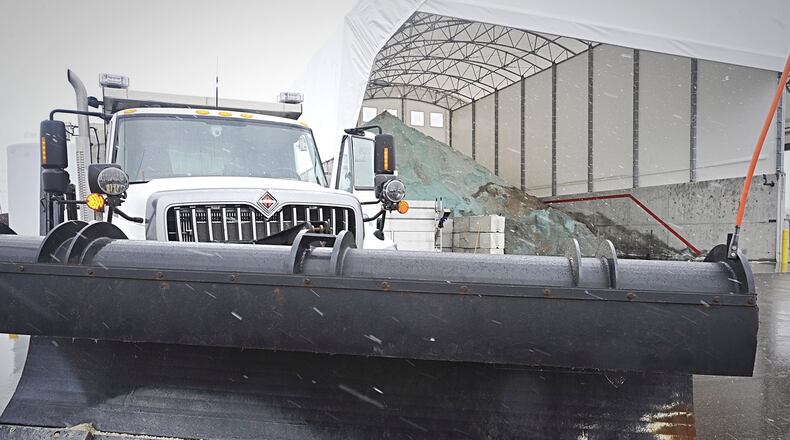February had only four days at or below freezing, according to the National Weather Service. The average temperature was 34 degrees. This unusually warm February followed an odd January, that never got colder than 13 degrees.
As of Feb. 9, ODOT used 279,228 tons of salt. By that same date last year, ODOT had used nearly double that, or 552,127 tons of salt.
Bruning said during the winter of 2013-2014, one he remembers being particularly harsh, ODOT put down over 1 million tons of salt.
RELATED: Odd January ends with no frigid days, little snow
The city of Dayton has used 10,328 tons of salt, less than the 11,101 tons used the previous winter, according to data from the public works department.
So far this winter, Huber Heights has had 16 snow related events that they needed to use salt for. For comparison, the Huber Heights public works department had to salt or plow the roads 38 times last winter and 41 times the winter before.
Huber Heights Public Works Director Mike Gray said the city has used about half as much salt, from about 1,505 tons last winter to 762 tons this winter.
And while this has been a particularly mild winter, Gray said that all winter weather events require different responses.
“All snow weather incidents are different and will require different types of actions for different areas,” Gray said. “No two really ever get responded to identically.”
Overtime
The mild winter season has also allowed for lower overtime expenditures. Overtime charged to Dayton’s Public Works 2020 budget to date is approximately $15,000. The department budgeted $206,000 for overtime for winter operations in 2020.
Fred Stovall, Dayton’s public works director, said not expending those budgeted dollars on snow and ice events will allow the city to reallocate those funds to other resources needed during 2020.
Kathy Bartlett, director of public services for Riverside, said the city has saved nearly $10,000 in overtime wages for staff due to the mild winter.
At this point last winter, ODOT employees had worked about 762,234 hours, Bruning said. This winter, they have worked 477,025 hours.
While there have been fewer winter events to respond to, Bruning said ODOT is still working every day to make roadways safer.
“Our people are still working hard out there everyday,” Bruning said.
MORE: Scattered, light snow showers through the day; bitter cold temps tonight
“Ripple effect”
In addition to saving on overtime pay and salt, municipalities save on fuel and and wear and tear on their vehicles.
Riverside saved about $5,000 on fuel and plow cutting blades this winter, Bartlett said.
“It’s a ripple effect,” Bruning said.
The mild winter weather means there will be less wear and tear on the state’s equipment too, Bruning said. Last year, ODOT snow plows drove 6.7 million miles. This year, they have only driven 3.8 million miles.
The region has also seen fewer potholes because of the mild winter weather.
Stovall said there are about 14% fewer potholes in Dayton this winter than last year.
Potholes form when there is a lot of freezing and thawing of snow or rain,which there has been little of this winter.
Aside from a snow storm on Feb. 12 that brought about 2.5 inches of snow, the most snow the Dayton-region has seen this month was Feb. 26 at 2.4 inches, National Weather Service data shows.
Stovall said Dayton won’t need to order additional salt for this winter season due to the mild winter.
Next year, when ODOT goes to buy salt Bruning said the prices will likely be lower.
“Everybody else is in the same boat as us, so they’ll be buying less salt, the demand will be down,” Bruning said.
RELATED: Cities save thousands on road salt in mild month
ODOT won’t know how much they have “saved” from having a mild winter until they go to fill the salt barns next year.
What money they do save, ODOT will put into maintenance, like fixing drainage ditches or patching roads. Those projects will be funded from the difference in spending on salt. On years when Ohio sees more snow and ice, ODOT is forced to wait to do some of those projects.
By the numbers
2,335 - tons of salt Dayton has used in 2020
$38 million - the amount of money ODOT has saved to date this winter
279,228 - tons of salt ODOT has used this winter
552,127 - tons of salt ODOT used last winter
$10,000 - the amount of money the city of Riverside has saved on overtime this winter
About the Author

